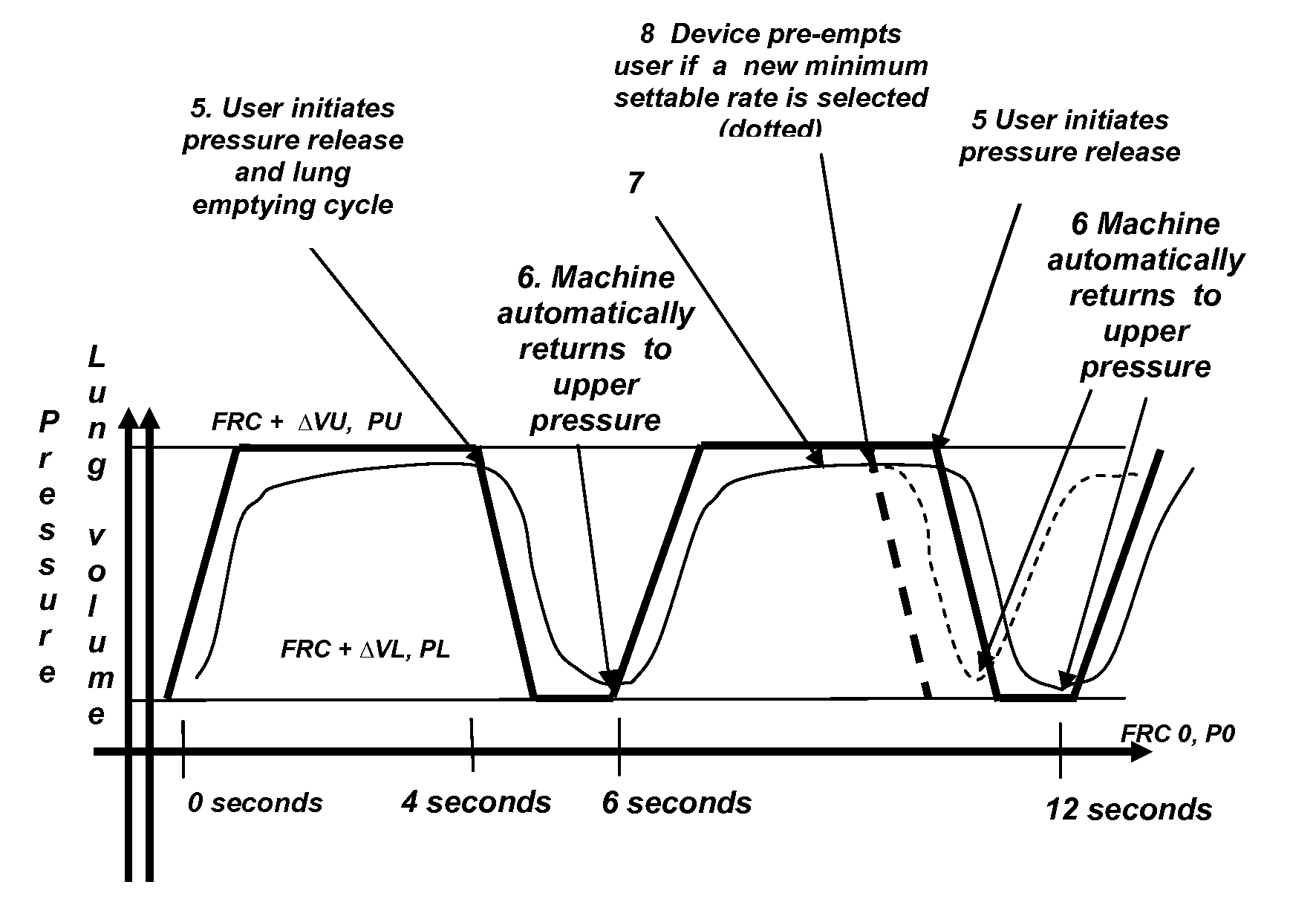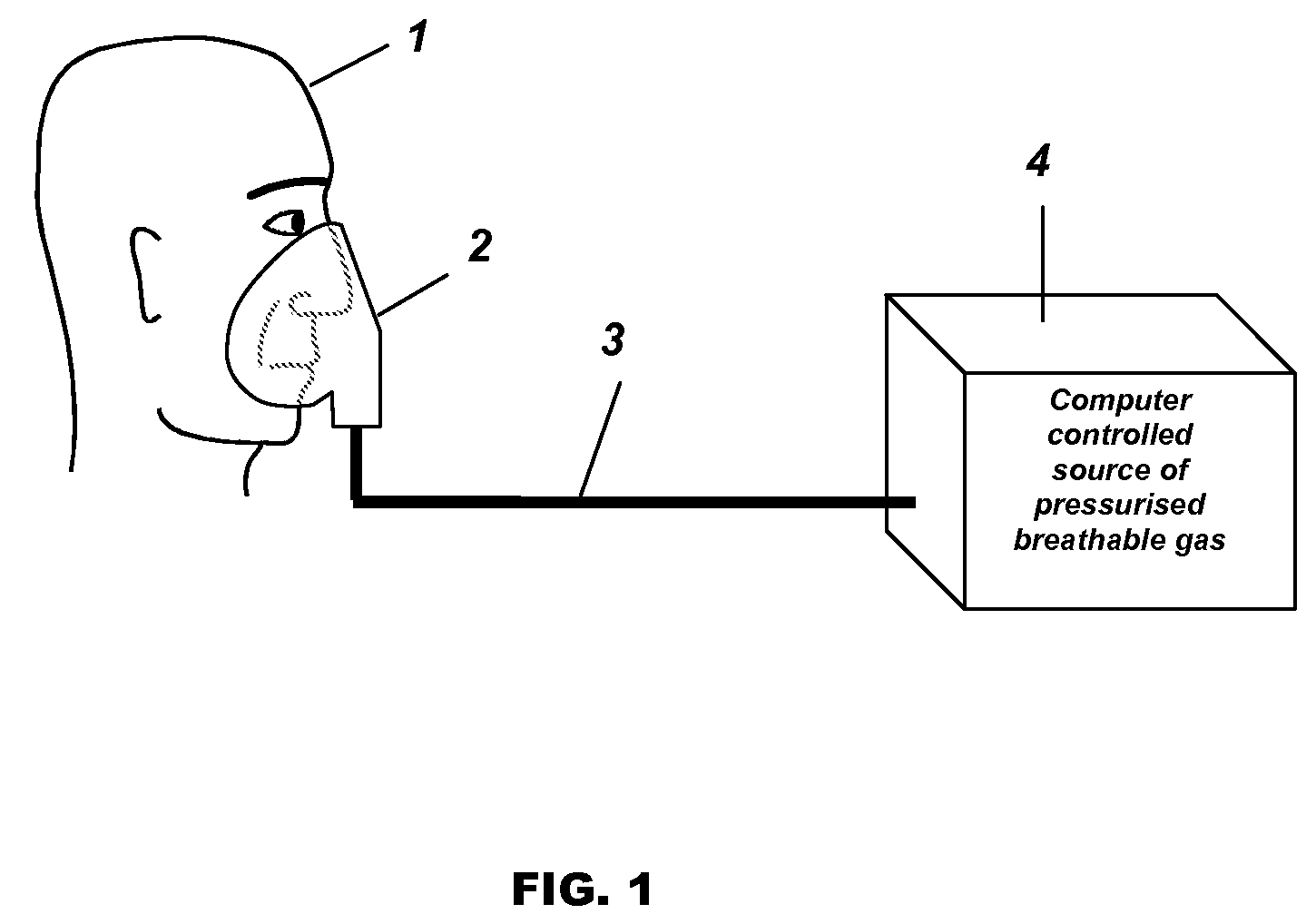Automatic Positive Airway Pressure Therapy through the Nose or Mouth for Treatment of Sleep Apnea and Other Respiratory Disorders
a technology of airway pressure therapy and nasal passage, which is applied in the direction of valve details, breathing protection, medical devices, etc., can solve the problems of unnatural, uncomfortable, and limited automatic selection of pressures for this bilevel modality, and achieves the effects of reducing the risk of respiratory disease, and improving the quality of li
- Summary
- Abstract
- Description
- Claims
- Application Information
AI Technical Summary
Benefits of technology
Problems solved by technology
Method used
Image
Examples
Embodiment Construction
[0031]While the invention described herein makes use of a vented face mask, tubing, and a blower unit, in common with other related nasal positive pressure therapies, the blower unit of the invention is designed to provide a more comfortable means for treating sleep apnea or other respiratory disorder such as sleep hypoventilation or COPD, by means of automatic respiratory support. The device is intended primarily, but not limited to use in the anaesthetised patient in quiet breathing in either wakefulness or sleep. The invention may be effectively used with a CPAP mask, full face mask, mouth mask, or nasal prongs or any combination thereof or any known mask systems for CPAP or nasal ventilation.
[0032]The invention in part takes advantage of the expiratory pause of the respiratory cycle and provides a means of reversing the normal expiratory / inspiratory cycle such that expiratory pause is transferred to the end of the inspiratory cycle. In this way the patient is not required to “tr...
PUM
 Login to View More
Login to View More Abstract
Description
Claims
Application Information
 Login to View More
Login to View More - R&D
- Intellectual Property
- Life Sciences
- Materials
- Tech Scout
- Unparalleled Data Quality
- Higher Quality Content
- 60% Fewer Hallucinations
Browse by: Latest US Patents, China's latest patents, Technical Efficacy Thesaurus, Application Domain, Technology Topic, Popular Technical Reports.
© 2025 PatSnap. All rights reserved.Legal|Privacy policy|Modern Slavery Act Transparency Statement|Sitemap|About US| Contact US: help@patsnap.com



